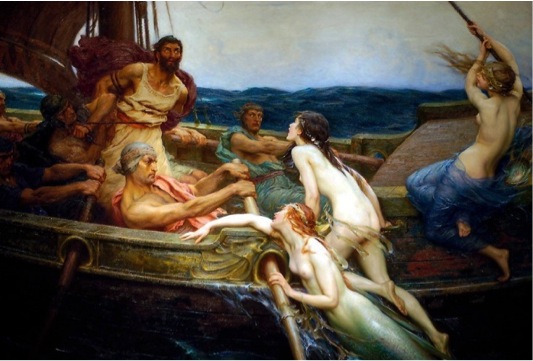Ferris Museum of Sexist Objects
Starr 314,
901 S. State Street
Big Rapids, MI 49307
(231) 591-5846
[email protected]
 Throughout history women have been referred to animals if they do not fit the norm
of an “appropriate” woman, or in other derogatory forms. Though many would assume
that we no longer do that our everyday vocabulary and slang perpetuates this idea.
For example a strong woman is called a “bitch” otherwise known as a female dog. When
girls get into fights we call them “catfights” and they fight with their “claws” or
nails. An older woman looking for a younger man is predator and called a “cougar”.
Not all animal references are with negative intentions though. The British slang for
an attractive young woman is “bird” or “pigeon”.
Throughout history women have been referred to animals if they do not fit the norm
of an “appropriate” woman, or in other derogatory forms. Though many would assume
that we no longer do that our everyday vocabulary and slang perpetuates this idea.
For example a strong woman is called a “bitch” otherwise known as a female dog. When
girls get into fights we call them “catfights” and they fight with their “claws” or
nails. An older woman looking for a younger man is predator and called a “cougar”.
Not all animal references are with negative intentions though. The British slang for
an attractive young woman is “bird” or “pigeon”.
There are several themes in Greek mythology in which a woman is portrayed as a beast, an animal, or a killer of men. First of all is Medusa. Medusa was once considered very beautiful. Some myths state that Athena was jealous of her beauty, for Medusa was a priestess for the temple of Athena. Other myths state that she had made a pledge of celibacy and later fall in love with Poseidon, God of the seas, and broke her vow. Athena then transformed Medusa into the well-known beast of today. Medusa’s hair is made of serpents, her skin of scales, and her gaze could turn any man to stone.
 Harpies: Originally harpies were thought as beautiful maidens with golden wings, but their
appearance was then changed to ugly creatures with wings, birds with the heads of
maidens. Their purpose is that of thieves. They steal food and people for the gods.
Whenever there was a disappearance of a person or valuable item, Harpies was considered
the culprit.
Harpies: Originally harpies were thought as beautiful maidens with golden wings, but their
appearance was then changed to ugly creatures with wings, birds with the heads of
maidens. Their purpose is that of thieves. They steal food and people for the gods.
Whenever there was a disappearance of a person or valuable item, Harpies was considered
the culprit.
 Sirens: Siren’s in mythology were beautiful half-woman, half animal like creatures who sang
songs so beautiful the listener would fall into a state of lethargy. They would forget
what they were doing and typically died of hunger. In many tales sirens are sisters
who lured sailors to their death. Sirens have also been identified as mermaids in
similar stories.
Sirens: Siren’s in mythology were beautiful half-woman, half animal like creatures who sang
songs so beautiful the listener would fall into a state of lethargy. They would forget
what they were doing and typically died of hunger. In many tales sirens are sisters
who lured sailors to their death. Sirens have also been identified as mermaids in
similar stories.
 “Just another piece of meat”
“Just another piece of meat”
Peta’s recent aids against animal violence use women as an example of animals in some barbaric ways: These aids are meant to grab the reader’s attention and also be satirical, yet the question remains “Why do we use women, and why are they so sexualized in these particular advertisements?”. The simplest explanation is this: attractive women can sometimes be considered “a piece of meat,” just as animals can also be considered “just a piece of meat”. This vague explanation therefore condones sexually objectifying women and the use of violence towards women as a marketing strategy.
Nicole Outman
Ferris State University
2014
References:
Anderson. K.V. (2012). Hey, PETA-don’t women deserve as much respect as animals? The New
Atsma, A.J. (2011). Harpyiai. Theoi Project, Retrieved on 9/18/14 from
https://www.theoi.com/Pontios/Harpyiai.html
Atsma, A.J. (2011) Seirenes. Theoi Project, Retrieved on 9/18/14
https://www.theoi.com/Pontios/Seirenes.html
Greekmythology.com (2014). Medusa. Greekmythology.com Retrieved on 9/18/14 from
https://www.greekmythology.com/Myths/Creatures/Medusa/medusa.html
Greekmythology.com (2014). Sirens. Greekmythology.com, Retrieved on 9/18/14 from from
http://www.greekmythology.com/Myths/Creatures/Sirens/sirens.html
Green, D. (2013). 15 Recent ads that glorify sexual violence against women. Business Insider,
Retrieved on 9/18/14 from https://www.businessinsider.com/sex-violence-against-women-ads-2013-5?op=1
Illinois.edu (NA). Medusa in myth and literary history. University of Illinois Retrieved on 9/18/14 from
https://www.modernamericanpoetry.org/node/623
Jaded & Meeks, Inc. (2014). Medusa. Retrieved on 9/18/2014 from
Wade, L. (2010). Metaphorical merri-go-round: Likening animals to women. The Society Pages.
Retrieved on 9/18/14 from https://thesocietypages.org/socimages/tag/public-service-announcements/page/3/
Wikipedia (2013) Siren (mythology). Wikipedia The Free Encyclopedia, Retrieved on 9/18/14 from